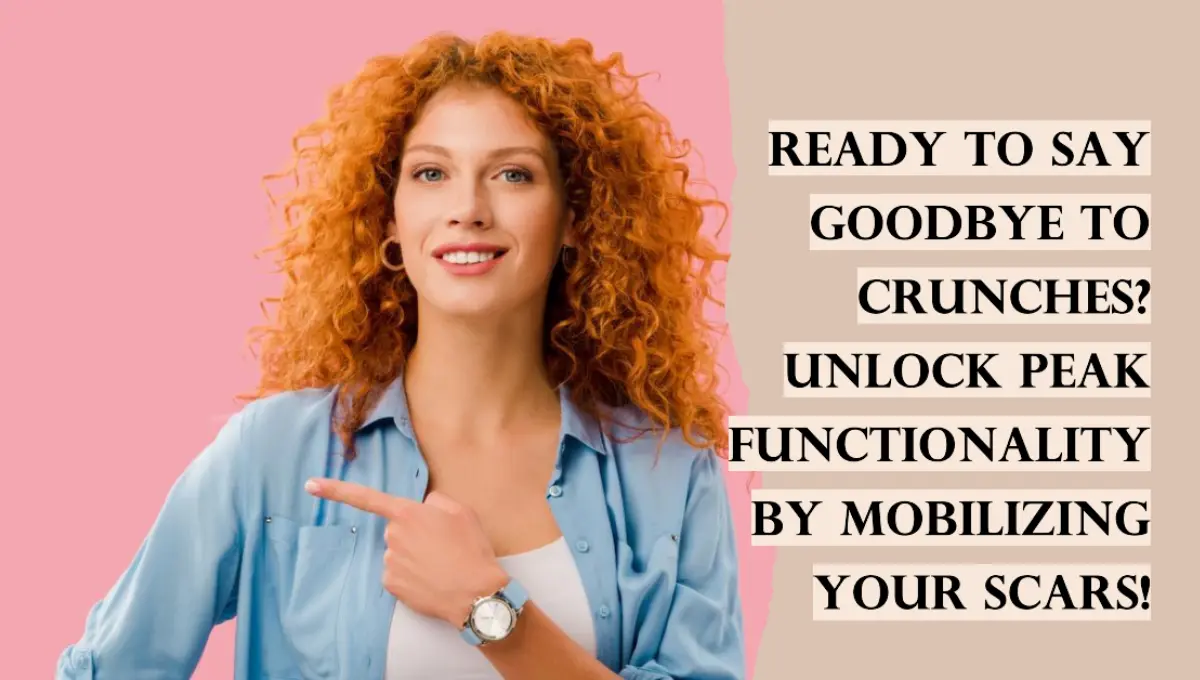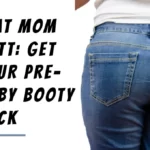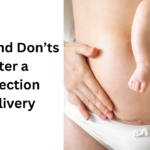
The “C-section shelf” refers to the pouch of fleshy or fatty tissue that hangs over the C-section incision site. This can be a concern both in terms of appearance and function. Many individuals feel self-conscious about the abdominal area protruding over the low-lying bikini line incision. Thankfully, modern C-section techniques have significantly improved aesthetics. The current gold standard is the low transverse incision, which is typically placed below the bikini line, measuring around 5-7 inches. This is a considerable improvement over the older vertical incisions of 8-10 inches from the past. The new approach helps minimize the visibility of scarring and allows for a more natural look post-surgery.
Scar tissue mobilization and cupping are effective methods to diminish the shelf-like appearance caused by scarring. These techniques involve manipulating and lifting stuck tissues, which can help reduce indentation and minimize the noticeable shelf effect.
It’s important to acknowledge that every birthing experience is unique and valid. While a less invasive incision might be promoted, it’s crucial not to perpetuate any sense of shame or disappointment for those who undergo cesarean births. Cesarean sections can be medically necessary and are an integral part of modern childbirth. The focus should be on supporting all birthing choices and creating a positive and empathetic environment for all mothers, regardless of the method. Let’s celebrate the miracle of birth in all its forms and empower mothers to feel proud of their journey, no matter how they bring their little ones into the world.
Related: C-Section Scar Healing Stages
What causes a “C-section Shelf”?
During the process of incisional healing, collagen is produced to strengthen tissue in the scar. However, scar tissue collagen often forms in a disorganized way, resulting in a dense and irregular ridge that might resemble worm-like patterns. This can lead to adhesions forming between layers of abdominal tissue, causing them to stick together. In cases where there’s excess skin or fat due to pregnancy or postpartum changes, it might appear as if the skin is hanging over the adhesion, creating a shelf-like effect. This phenomenon is not uncommon and is a natural part of the healing process.
Related: How Do Celebrities Lose Weight Fast After Pregnancy?
Why do adhesions wreak havoc: Unraveling the dual impact on function and aesthetics?
Scar adhesions are complex, involving layers of skin, fat, muscle, and fascia. In c-section scars, these adhesions can cause tension in areas like the back, hips, and pelvic floor, even binding pelvic organs like the bladder, uterus, and rectum. This can lead to issues like painful sex and urinary urgency.
To address this, scar mobilization is a safe exercise. You can do it with a physical therapist or at home. It helps reduce the impact of adhesions, easing discomfort and improving pelvic symptoms.
Related: How Often Do I Need A Pap Smear?
How long does the C-section Shelf typically last after giving birth?

Generally, the healing process takes about six weeks. During this time, it’s advised to avoid lifting heavy objects, engaging in intense exercise, and having sex. Hospital stays after a C-section typically last two to three days. If there were complications or if a woman has additional responsibilities like caring for other children, she might need more recovery time. If pain persists or if she doesn’t feel fully recovered after six weeks, consulting a healthcare provider is recommended. Remember, every person’s healing timeline is unique.
Related: Maternity Leave Letter To Employer
Craving a solution for that C-section Shelf? Spoiler: Crunches aren’t the answer!
Absolutely! The pressure to bounce back after a c-section is real, but it’s important to prioritize health over quick fixes. The so-called “c-section shelf” is a natural result of pregnancy and childbirth, not just excess fat. Instead of falling for marketing tactics, focus on gradual, sustainable methods.
Engage in postpartum exercises that strengthen your core, such as pelvic tilts, kegels, and gentle yoga. Building a strong foundation is key, and it doesn’t involve extreme crunches or drastic weight loss. Nourish your body with a balanced diet and stay hydrated. Remember, your body has gone through a remarkable journey, and patience is key.
Related: 17 Weeks Pregnant – Fetus
Why aren’t C-sections discussed more often and what can we do to better prepare women for the recovery process?
The lack of discussion around C-sections can be attributed to societal norms, limited awareness, and the focus on vaginal births as the “natural” way of delivery. Vaginal births are often highlighted, leaving C-sections less talked about. To better prepare women for C-section recovery:
- Increase Awareness: Encourage open conversations about C-sections to normalize the experience and provide a platform for sharing stories.
- Comprehensive Education: Develop childbirth programs covering C-section recovery specifics like postoperative care, pain management, and emotional well-being.
- Personal Experiences: Encourage women to share their C-section experiences through platforms and support groups, reducing feelings of isolation.
- Offer Support: Ensure healthcare providers offer postpartum checkups, access to consultants, mental health support, and safe exercise guidance.
By promoting awareness, education, sharing, and support, we can better prepare women for a smooth C-section recovery journey.
Can diet and exercise alone reverse the C-section Shelf?
While diet and exercise alone might not completely reverse it, they are crucial in reducing excess fat and toning abdominal muscles. Pregnancy’s effects on the skin’s elasticity and muscle separation are significant factors. Postpartum treatments targeting both skin and fat layers can help alleviate the issue. Incorporating strength training exercises that focus on the abdomen is beneficial.
Wondering how to tackle the “C-section Shelf” effect? Let’s find the real solutions!
Here are some ways to help minimize its appearance:
- Manual scar tissue mobilization: This technique involves massaging the scar tissue to break up adhesions and improve mobility. It can help to minimize the shelf-like appearance.
- Cupping: This technique involves using suction cups to create a vacuum effect on the skin, which can help to increase blood flow and reduce inflammation. It can also help to minimize the shelf-like appearance.
It’s important to note that diet and exercise alone cannot reverse a C-section shelf. However, establishing a smart and safe postpartum workout routine can be a step in the right direction.
What’s the deal with surgery? Will you still require mobilization for support?
Certainly! Abdominoplasty, commonly known as a tummy tuck, is a surgical option to address the shelf-like appearance caused by excess skin and belly fat. Often combined with breast surgery in a “mommy makeover,” it can yield impressive results. However, it’s crucial to understand that abdominoplasty is a major surgery involving a hip-to-hip incision and a recovery period of 6-12 months. To optimize outcomes, integrating scar mobilization and physical therapy is recommended. These practices aid in restoring core and pelvic floor strength and coordination, enhancing the overall effectiveness of the procedure. It’s essential to consult with a qualified surgeon and discuss potential benefits and risks before considering this option.
Ready to say goodbye to crunches? Unlock peak functionality by mobilizing your scars!

It’s essential to understand that endless core workouts and gimmicky products won’t effectively address the c-section shelf concern. This shelf is typically due to adhesions at the scar site, which can impact both function and aesthetics. Problems like low back pain, bladder issues, and discomfort during intercourse might arise from these adhesions.
Instead of relying on crunches, focus on scar mobilization and cupping techniques. These methods can help release adhesions, benefiting your overall function and even improving the appearance of the c-section scar. The great news is that you don’t have to do crunches to achieve these results. Prioritizing scar health and mobility will bring you better outcomes.
You Can Join – C-SECTION SCAR MOBILIZATION WEBINAR
Frequently Asked Questions (FAQs)
What is the C-section shelf?
The C-section shelf is a pouch or “pooch” of fleshy, sometimes fatty tissue that hangs over the C-section incision. It can be a concern both aesthetically and functionally.
Can diet and exercise alone reverse the C-section shelf?
What are some postpartum treatments that can help flatten the stomach and reduce the C-section shelf?
What are the different categories of C-section shelves?
Can plastic surgery remove the C-section shelf?
Yes, plastic surgery may be needed to remove excess skin and fat in cases where diet and exercise alone are not effective. However, it is important to seek professional medical advice and find a course of action that works best for each individual woman.












